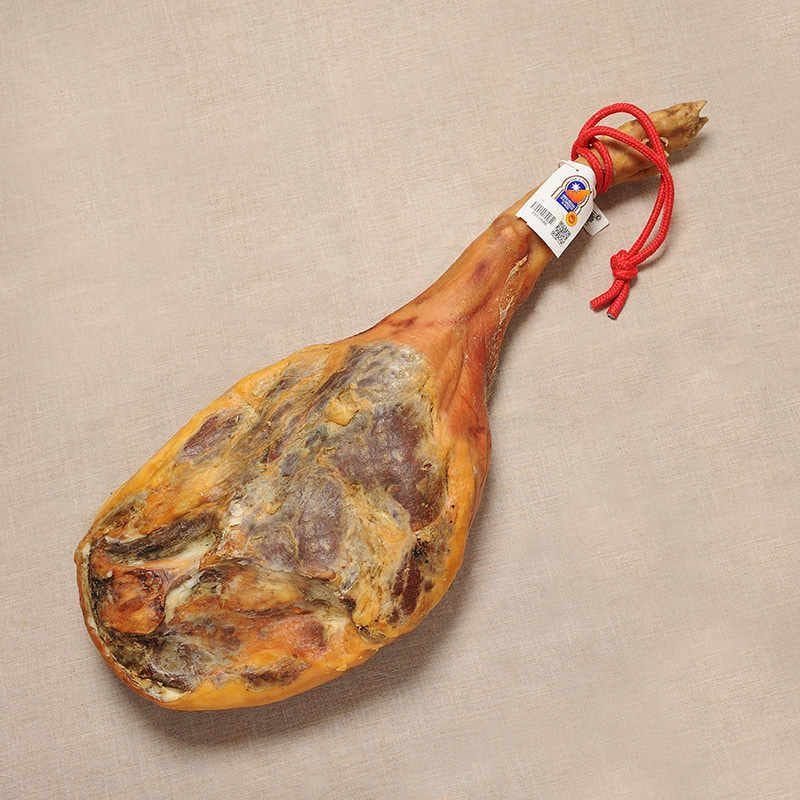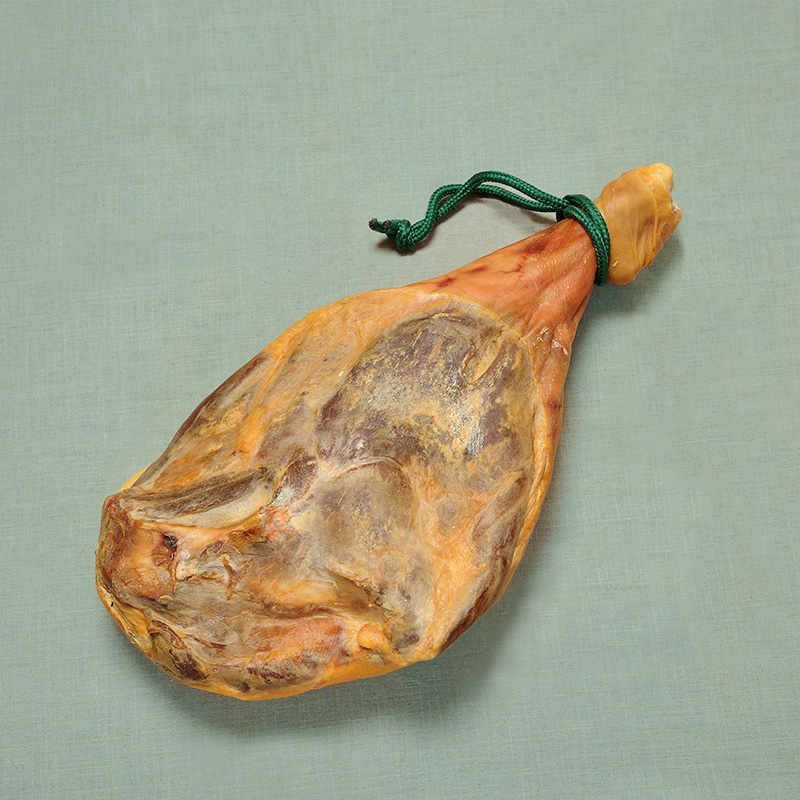air-dried ham is one of the most popular Spanish hams. Air-dried ham is a type of cured hams that is typically preserved by drying in the open air. There are several varieties of air-dried ham, each with its own unique characteristics and production methods.
Types of Spanish Air dried ham we can find in Spain
Air-dried ham is at its best in Spain. There are two types of air-dried ham, depending on the breed of pig:
Serrano Ham: This Spanish Serrano ham is salt-cured and air-dried in the mountains. Such is the case of Teruel ham or Trévelez ham. These hams are usually cured at more than 800 meters above sea level. It has a distinct flavor and is often served in thin slices.
Iberian hams: Hailing from Spain as well, Iberian cured ham is made from Iberian pigs and is known for its rich flavor and marbled texture.
These hams vary in terms of taste, texture, and regional influence. Each type is celebrated for its unique qualities, and they are often featured in various dishes and charcuterie boards.
Production process of Air dried ham:
The production process of air-dried ham involves several steps to cure and dry the meat. Here is a general overview of the traditional process:
- Selection of Meat: Quality air-dried ham starts with selecting the right cut of meat. Often, the hind leg of the pig is used for making ham.
- Trimming: The excess fat is trimmed off the meat, leaving a certain amount for flavor and moisture during the curing and drying process.
- Salting: The meat is heavily salted to draw out moisture and preserve the ham. This process is known as “dry curing.” The salt helps to prevent the growth of bacteria and mold.
- Resting: After salting, the ham is left to rest for a specific period. This allows the salt to penetrate the meat, and the ham begins to take on its characteristic flavor.
- Washing and Drying: The excess salt is washed off the ham, and it is left to air dry. During this phase, the ham develops a protective outer layer known as the “crust.”
- Maturation: The ham is transferred to a controlled environment, often a curing room, where it undergoes a slow and controlled maturation process. This can take several months to even a few years, depending on the type of ham.
- Aging: The ham continues to age in a well-ventilated environment. The length of the aging process contributes to the flavor and texture of the ham.
- Quality Control: Throughout the entire process, quality control measures are in place to ensure that the ham meets specific standards. This includes regular checks for moisture content, weight loss, and overall quality.
- Final Drying: The ham is left to air dry further until it reaches the desired level of dryness. This final drying phase contributes to the concentration of flavors.
The specific details of the production process can vary depending on the type of air-dried ham and the regional traditions. Each variety of air-dried ham may have its own unique steps or variations in the process that contribute to its distinct characteristics.
Benefits of Air dried Ham
Air-dried ham has been produced in Spain for centuries. In the beginning it was a way of preserving meat, since there were no refrigerators or fridges. However, it is a product that has lasted for centuries because it is delicious. Some other benefits of air-dried ham include:
- Rich Flavor: Air-dried ham has a concentrated and distinctive flavor due to the slow curing and drying process. The taste is often savory, salty, and can have a hint of sweetness.
- Versatility: Air-dried ham can be enjoyed in various ways. It is commonly served thinly sliced on its own, in sandwiches, as part of charcuterie boards, or as an ingredient in various dishes.
- Long Shelf Life: The curing and drying process of air-dried ham contributes to its preservation, allowing it to have a longer shelf life compared to fresh pork.
- No Cooking Required: Since the ham is air-dried during the curing process, it is typically consumed without cooking. This makes it convenient for quick and easy meals.
- Cultural and Culinary Significance: Different types of air-dried ham have cultural significance in their respective regions. They are often integral to the culinary traditions of these areas and are celebrated for their unique flavors and textures.
- Charcuterie: Air-dried ham is a popular choice for charcuterie boards. Its versatility, combined with its distinct taste, makes it a favorite among those who appreciate cured meats.
- Nutritional Content: While air-dried ham is high in salt, it also contains protein and certain nutrients. However, it’s essential to consume it in moderation due to its salt content.
It’s worth noting that while air-dried ham can be a flavorful and enjoyable food, individuals with specific dietary restrictions, such as those on low-sodium diets, should be mindful of its salt content. Additionally, the nutritional profile can vary depending on the specific type and production methods of the air-dried ham.








